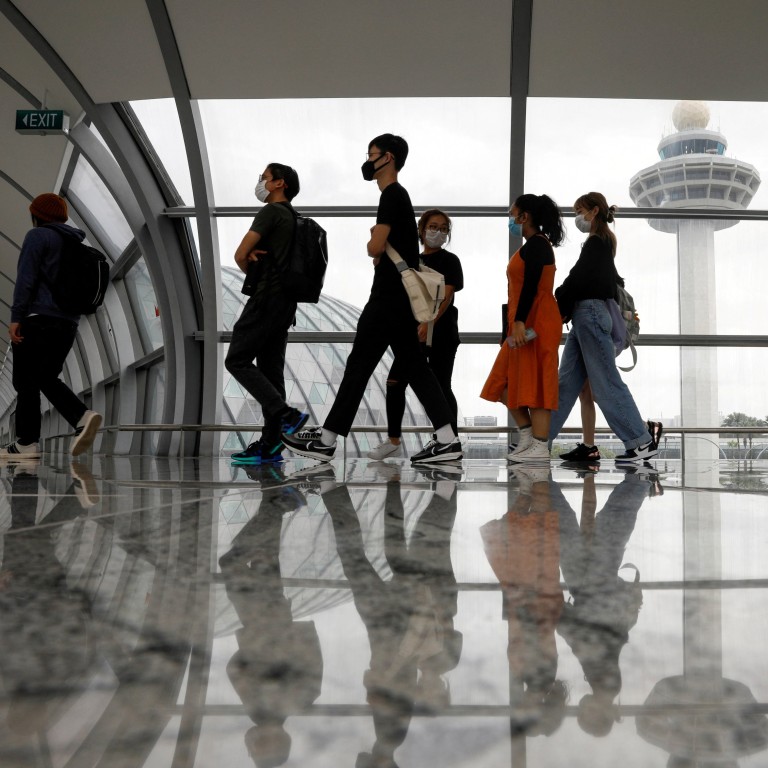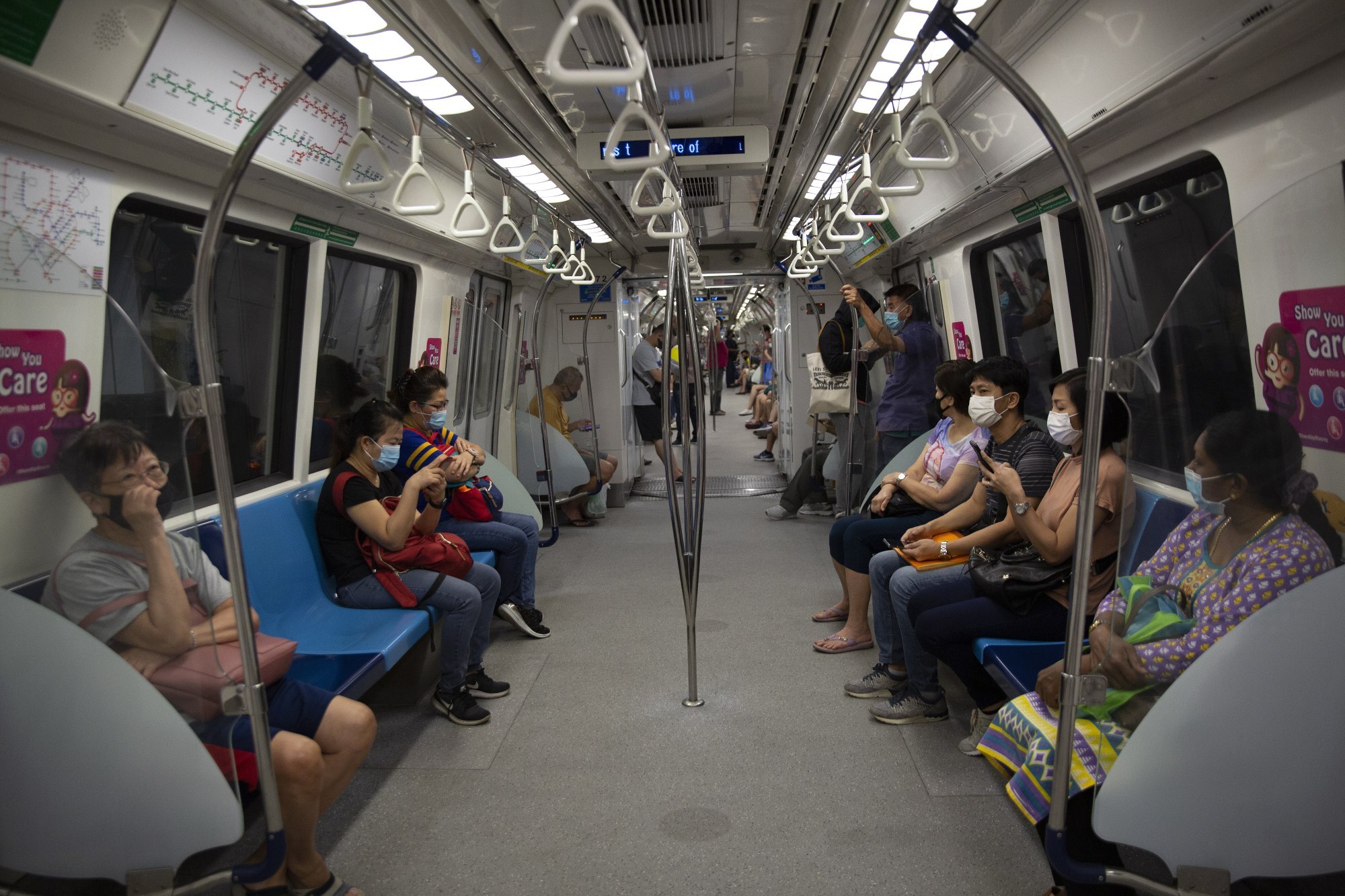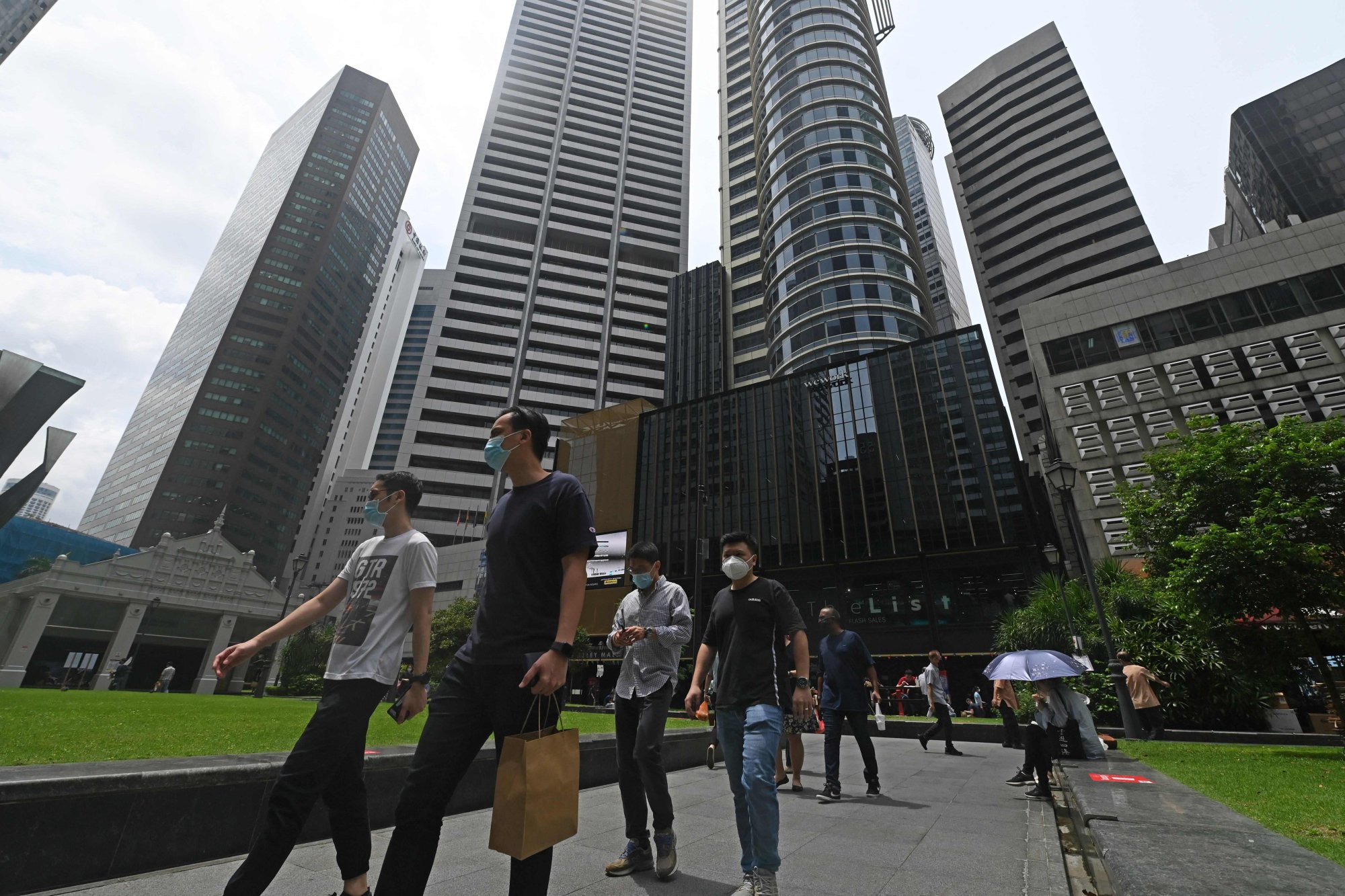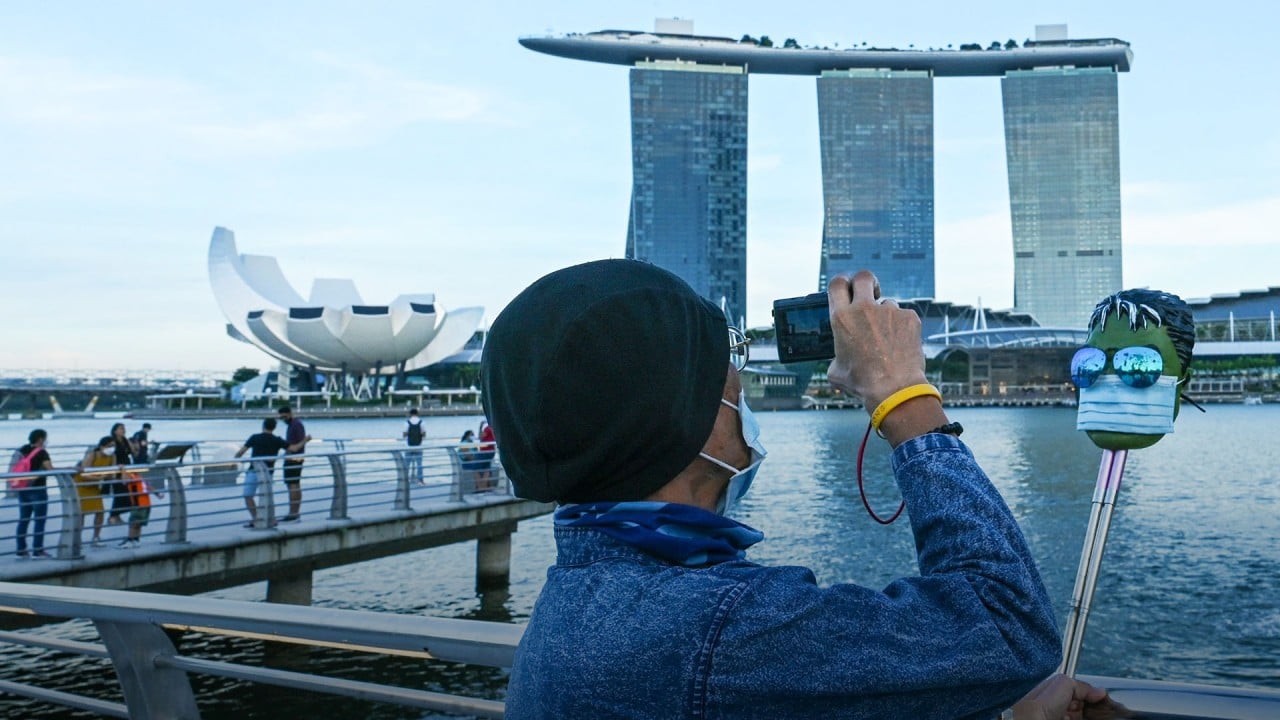
Explainer | Singapore’s ‘decisive’ living with Covid-19 move: all you need to know
- From masks off outdoors to no on-arrival testing for vaccinated travellers, Singapore from next week will ease or ditch a slew of pandemic-era curbs
- Alcohol can be served after 10.30pm again and live performances are set to make a return – but not all workers will be as excited about a return to the office
From next week, the highly-vaccinated nation – 95 per cent of eligible people have been double-jabbed; with 71 per cent having had a booster – will join the ranks of countries across the world that now allow, or are taking steps to allow, vaccinated travellers to enter quarantine free with a negative pre-departure test.
Lee took pains to point out that the city state of 5.45 million, which is still seeing nearly 10,000 cases a day on average, was stopping short of a “complete opening up”. “We remain watchful because Covid-19 may bring further surprises,” he said.
Still, it represents one of the most major relaxations of restrictions in Asia and stands in stark contrast to Hong Kong’s approach. Here are some of the key changes:
Masks off outdoors
Starting on Tuesday next week, Singapore residents do not need to wear masks outdoors. Explaining the rule change in a televised national address on Thursday, Lee said the risk of outdoor transmission was “significantly lower”. “But indoors, masks will still be mandatory,” he said.
The city state had imposed a strict mask-wearing policy since the height of the pandemic in 2020, only allowing people to remove masks when eating or when taking part in strenuous activities. Those found flouting the rules faced a fine of up to S$10,000 (US$7,400) and/or imprisonment of up to six months.

Authorities said residents were still being encouraged to wear masks outdoors for personal protection, especially in crowded areas. Indoor areas include all buildings with clearly defined entrances – such as office buildings, shopping malls, and public transport – while outdoor places refer to those with “open access” including bus stops and void decks, as the open areas on the ground floor of public housing estates in Singapore are known.
No on-arrival tests; travel to Malaysia
From March 31, Singapore will retire its vaccinated travel lane programme and allow all fully-vaccinated people to enter quarantine-free as long as they have not travelled to regions on a restricted list within the last week. Currently, there are no places on that list, which would be used for places with variants of concern.

Testing rules will also be simplified with on-arrival testing to be scrapped. Travellers entering by air and sea will still need to submit a negative pre-departure test two days before arrival, however.
“This shift to the vaccinated travel framework is a decisive step for Singapore and an important signal to the world that Singapore has fully reopened its borders, that we are reconnecting with the world,” Transport Minister S. Iswaran said.
Singapore’s foreign visitor arrivals from Hong Kong hit 2-year high last month
At a press conference on Thursday, Iswaran noted that close to 600,000 travellers had entered Singapore via the vaccinated travel lanes. Last week, passenger traffic reached 18 per cent of pre-pandemic levels – the highest since the country closed its borders in March 2020.
On Thursday, Lee and his Malaysian counterpart Ismail Sabri Yaakob announced that the two countries would further reopen their land borders – one of the world’s busiest land crossings – for fully-vaccinated travellers using private vehicles from April.
This is an expansion of the current rules, which allow a limited number of travellers to enter via appointed bus services.

Live performances, bars
When Singapore exited its lockdown, it allowed venues to offer dine-in services but introduced a rule banning establishments from serving and selling alcoholic beverages after 10.30pm. This rule did not change throughout the past two years even as other restrictions were adjusted.
As recently as March 11, virus task force co-chair Lawrence Wong said it was too early to consider relaxing alcohol consumption rules. The city state was taken by surprise on Thursday when Wong did an about-turn and said the 10.30pm restriction would be lifted from Tuesday. The government also said it would allow live performances and the broadcast of live sports events at food and beverage establishments to resume.
Gatherings, office returns, boosters
From only allowing essential workers to leave their homes during the height of its lockdown in 2020, Singapore has incrementally eased restrictions on the proportion of staff that can be in a workplace – though it never allowed more than half and sometimes had restrictions on interactions.
This changes from Tuesday, when 75 per cent of the workforce will be allowed back. But not all will welcome the new rule. Survey results published this month found that four in 10 employees in Singapore would sacrifice a bigger bonus for the privilege of working remotely.

Residents have cheered the news, however, that they can from Tuesday gather in groups of 10 instead of the current five. Since exiting lockdown, Singapore has vacillated between allowing groups of two, five and eight to congregate in public – often overlapping with significant holidays, leading to watered-down Hari Raya (or Eid ul-Fitr), Deepavali (or Diwali) and Lunar New Year celebrations.
It has also been hard on the food and beverage industry, which saw only lukewarm interest from diners when only pairs were allowed to congregate in public.
The government on Thursday also said it would now allow vulnerable people to receive their fourth vaccine dose – a second booster – five months after their last jab. This will be available to everyone aged 80 and older, people living in aged care facilities, and medically vulnerable people.



